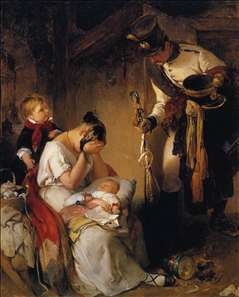Austrian painter, engraver and lithographer. In autumn 1810 he entered the Vienna Akademie to study drawing with Johann Martin
Fischer, Hubert Maurer (1738-1818) and Johann Baptist Lampi. After the death of his father in 1814, Fendi was forced to leave the Akademie and become a clerk to earn his living, although he still received occasional lessons. However, he was soon taken up by the doctor and art collector Joseph Barth, who recommended him to Anton, Graf von Lamberg-Sprinzenstein; Fendi was thus able to copy the Classical and Etruscan vases in the latter’s collection.
In 1818 he was appointed engraver and draughtsman of the imperial coin and antiquities collection, where his copies of the objects were valued not only for their precision but for their attractive still-life quality. In the 1820s Fendi started making lithographic prints, still a new technique at that time; these were mostly designs for illustrations in almanacs, albums or pocket-books. Fendi drew a great deal after the works in the Kaiserliche Gemäldegalerie and the Lamberg collection, paying particular attention to the Dutch genre painters of the 17th century. His development as an artist was further enhanced by a journey in 1821 to Venice, where he studied the art collections and drew local people and street scenes.
In addition to his about 2000 graphics in Viennese collections, he was also a portraitist and
genre painter in the style of the Viennese Biedermeier.
If you want write a review , you have to be registered.
